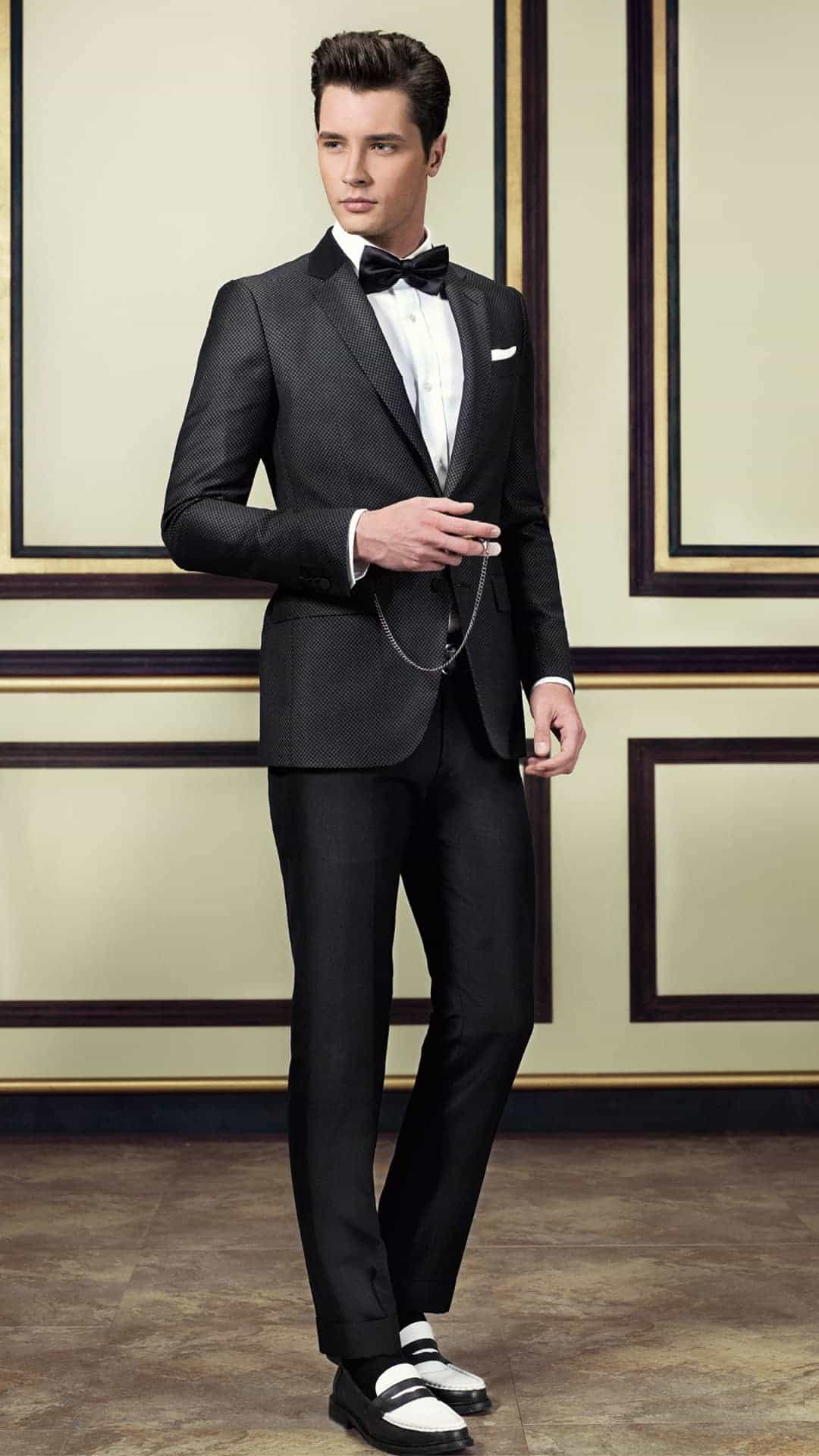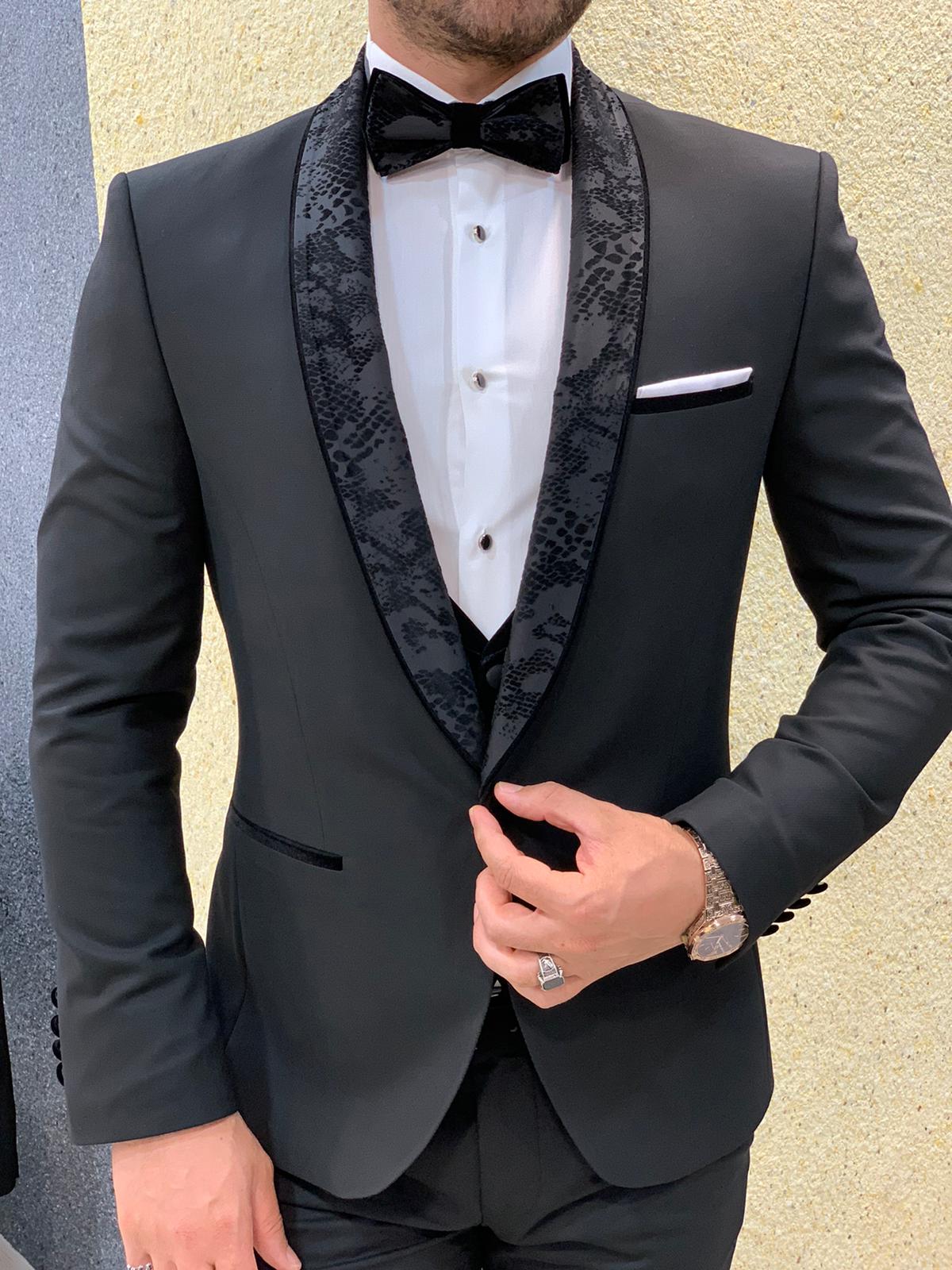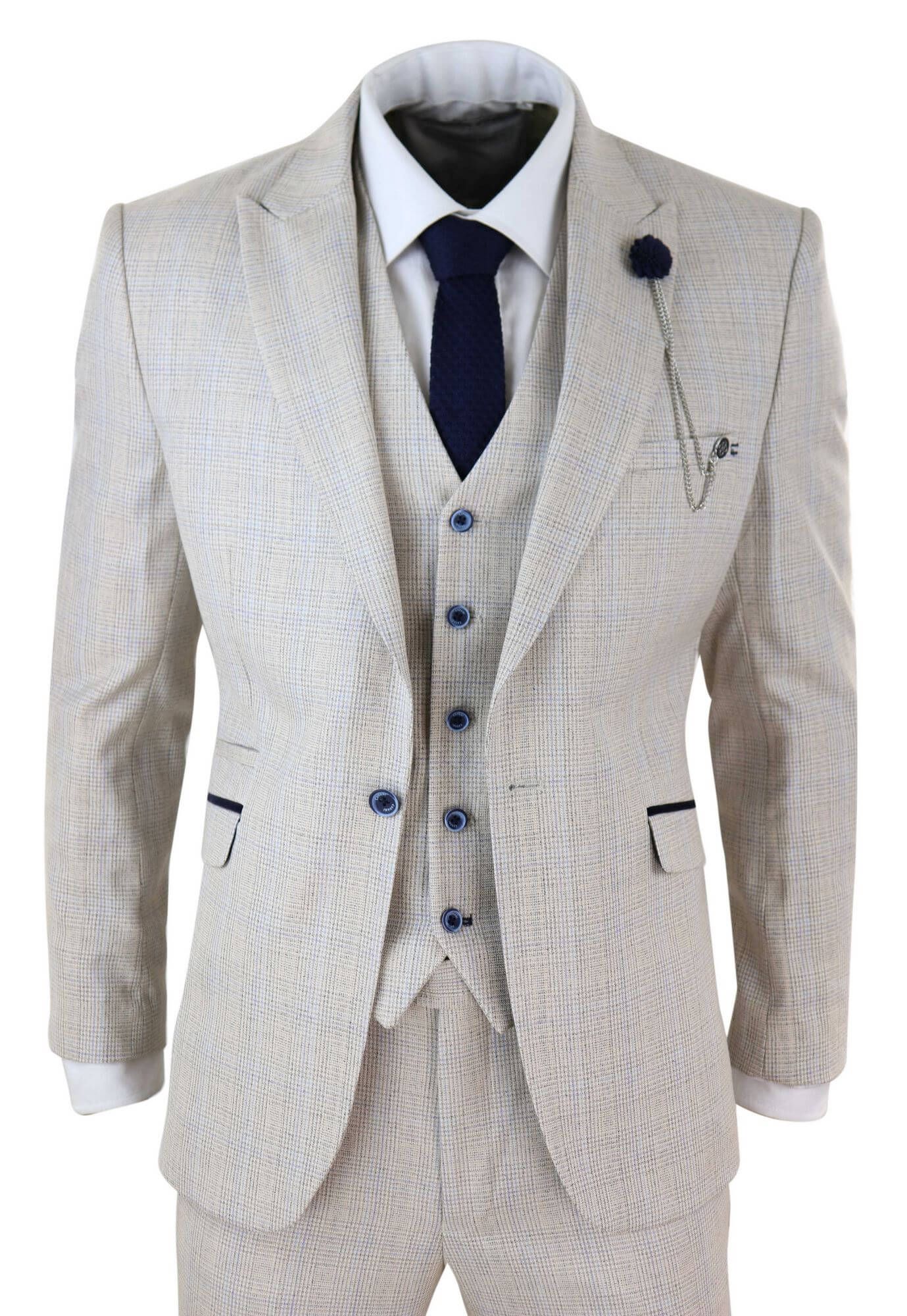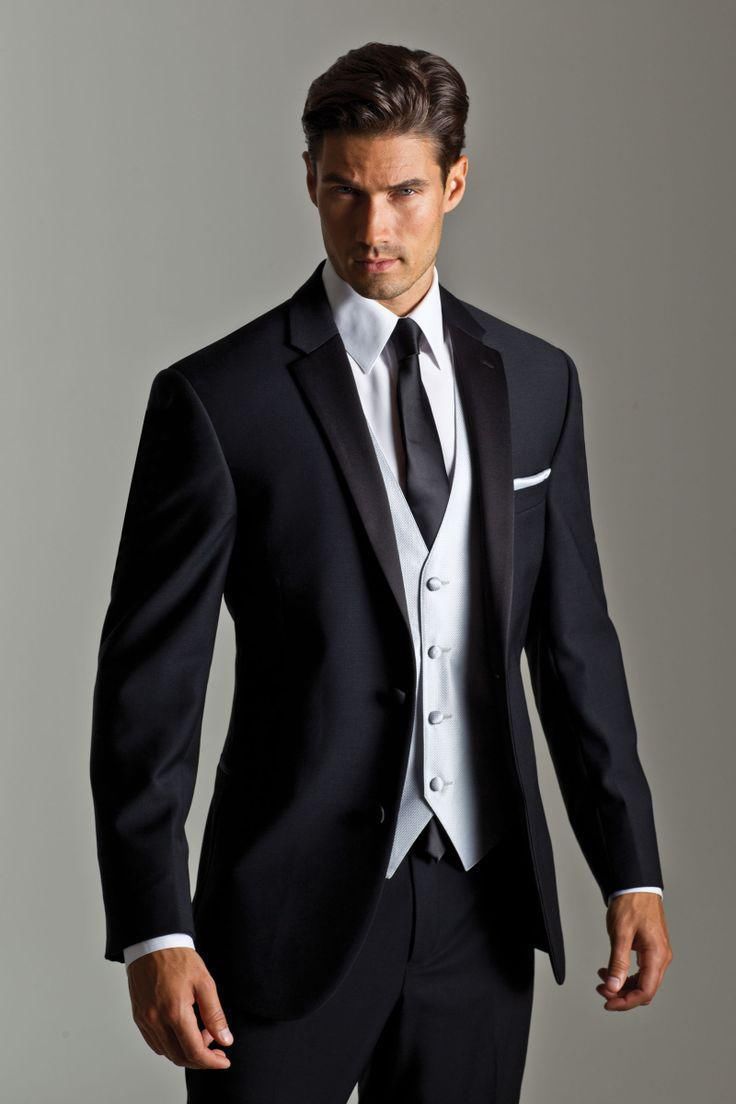I. Introduction

The groom’s wedding suit plays a significant role in completing the overall wedding ensemble. In this article, we will explore the importance of choosing the right wedding suit for both style and comfort. A well-tailored suit not only enhances the groom’s appearance but also instills confidence on his special day.
II. Understanding Wedding Suit Styles and Silhouettes
A. Classic Styles
- Single-Breasted vs. Double-Breasted: We will examine the key differences between these two traditional suit styles. Single-breasted suits are versatile, timeless, and suitable for various body types and wedding themes. Double-breasted suits, on the other hand, exude a more formal and vintage-inspired look.
- Notch Lapel, Peak Lapel, and Shawl Collar: The lapel style greatly influences the overall look of a wedding suit. We will explore these three popular lapel styles, discussing their characteristics and the aesthetics they bring to a suit. Notch lapels are versatile and suitable for a range of formalities, peak lapels add a touch of sophistication and formality, while shawl collars evoke a classic and elegant vibe.
B. Modern and Contemporary Styles

- Slim Fit vs. Regular Fit: Slim fit suits have gained popularity for their tailored and streamlined appearance. They are suited for groomsmen or grooms with a slim physique. Regular fit suits, on the other hand, offer a more relaxed and comfortable fit, accommodating different body types and providing ease of movement.
- Three-Piece vs. Two-Piece: We will explore the distinctiveness and versatility of both three-piece and two-piece suits. Three-piece suits, consisting of a jacket, vest, and trousers, evoke a sophisticated and formal look. Two-piece suits, which include a jacket and trousers, offer a more traditional and versatile option.
III. Choosing the Right Fabric and Color
A. Fabrics for Wedding Suits
- Wool: Wool is a classic and popular fabric choice for wedding suits. We will discuss the benefits of wool, including its breathability, durability, and ability to provide warmth in cooler seasons. Additionally, we will explore different variations of wool, such as Super 100s or Super 120s, which refer to the fineness and quality of the fabric.
- Linen and Cotton: For warm weather or destination weddings, lighter fabric options like linen and cotton offer breathability and comfort. We will delve into the characteristics of linen and cotton suits, discussing their suitability for specific wedding environments and aesthetics.
B. Colors for Wedding Suits

- Classic Black and Navy: Black and navy suits are timeless and provide a formal and elegant look. We will analyze the versatility and enduring appeal of these colors, discussing how they complement various wedding themes and color schemes.
- Shades of Gray and Blue: Gray and blue suits offer a range of hues that can create different moods and aesthetics. We will explore different shades, including charcoal gray, light gray, navy blue, and sky blue, discussing their impact on the overall look of the suit and the bride’s accompanying attire.
IV. Considering Fit and Tailoring Options
A. The Importance of Proper Fit
A well-fitting suit is paramount in ensuring the groom looks his best on his wedding day. Understanding the elements of a well-fitting suit contributes to both his confidence and overall appearance. This section will explore:
- Understanding the Elements of a Well-Fitting Suit
- Jacket Length: The jacket should reach the base of the thumb when the arms are hanging naturally by the sides.
- Sleeve Length: The sleeves should reveal about 1/4 to 1/2 inch of the dress shirt cuff.
- Waistline: The jacket should contour the body without pulling or bunching, and the button should comfortably fasten without strain.
- Analyzing the Impact of Suit Fit
- Confidence Boost: A well-fitting suit enhances the groom’s confidence, allowing him to feel comfortable and stylish on his big day.
- Enhancing Appearance: Proper fit accentuates the groom’s physique, creating a sleek and polished look that will be captured in wedding photos.
B. Tailoring Options for a Flawless Look

Tailoring options are essential to achieve a flawless fit that accentuates the groom’s body shape and personal style. This section explores different tailoring methods and common alterations:
- Off-the-Rack vs. Made-to-Measure vs. Bespoke
- Off-the-Rack: Ready-made suits that are purchased as-is. They offer convenience but may require additional alterations to achieve a precise fit.
- Made-to-Measure: Suits that are semi-customized using pre-existing patterns. Measurements are taken, and the suit is adjusted to fit the groom’s specifications.
- Bespoke: The highest level of customization, with suits made entirely from scratch based on the groom’s unique measurements and preferences.
- Alterations
- Sleeve and Trouser Length: The length can be adjusted to ensure a proportional look.
- Waist and Chest Suppression: Tailoring can create a more fitted silhouette by taking in excess fabric at the waist or chest.
- Shoulders and Collar: Alterations can be made to ensure the shoulders sit perfectly and the collar lays flat.
V. Styling the Wedding Suit
A. Dress Shirts and Neckwear

Choosing the right dress shirt and neckwear is crucial to complete the groom’s wedding suit ensemble. Considerations for color, fabric, and style include:
- Dress Shirt Considerations
- Color: Opt for a complementary color that complements the suit, such as white or light blue, to create a classic and elegant look.
- Fabric: Choose breathable fabrics, such as cotton or a cotton blend, for comfort throughout the day.
- Neckwear Options
- Ties: Choose a tie that complements the suit color and style, considering factors such as width and pattern.
- Bow Ties or Ascots: These options add a touch of sophistication and can reflect the groom’s personal style.
B. Accessories and Finishing Touches
Complete the groom’s wedding suit ensemble with carefully chosen accessories and finishing touches that add personality and style:
- Cufflinks, Pocket Squares, and Tie Bars
- Cufflinks: Select cufflinks that coordinate with the suit and express the groom’s style, whether it’s classic, contemporary, or personalized.
- Pocket Squares: Fold a pocket square in a style that complements the overall look, adding a pop of color or pattern.
- Tie Bars: These sleek accessories not only keep the tie in place but also add a touch of sophistication.
- Footwear and Belt Choices
- Footwear: Select shoes that match the suit’s formality and color, ensuring they are comfortable for the duration of the day.
- Belt: Choose a belt that matches the shoes and adds a polished finishing touch to the overall ensemble.
VI. Conclusion
Choosing the right wedding suit involves careful consideration of fit and tailoring options. From understanding the elements of a well-fitting suit to exploring tailoring methods and common alterations, grooms can achieve a flawless fit that enhances their confidence and appearance on their wedding day. Styling the suit with the right dress shirt, neckwear, accessories, and footwear completes the ensemble, reflecting the groom’s personal style and adding the perfect finishing touches. With these considerations in mind, the groom can confidently walk down the aisle, knowing his wedding suit fits him perfectly and complements the overall wedding aesthetic.
